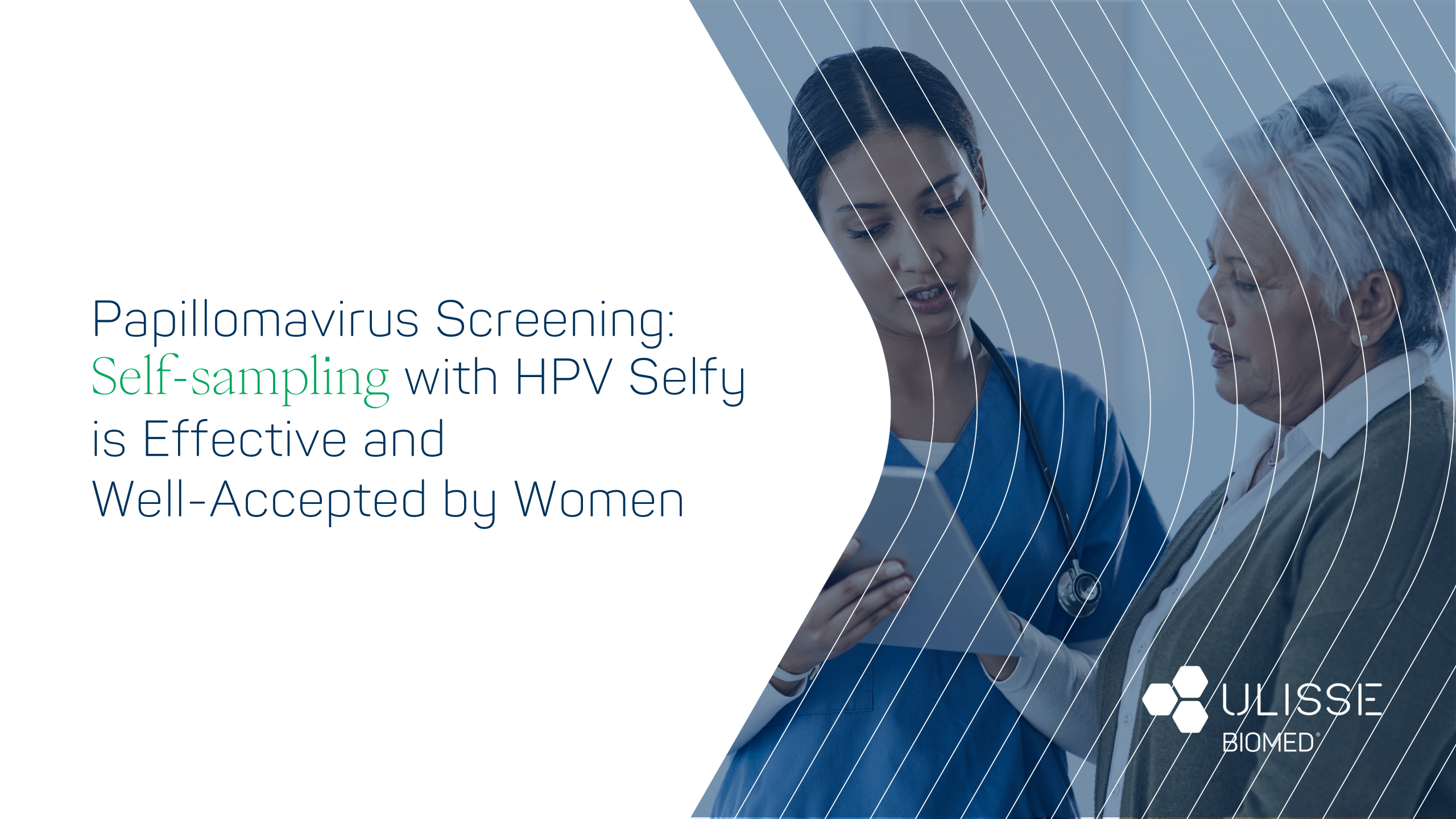20 September 2025
Reading time [minutes]: 22
Distributed Diagnostics
Decentralised molecular diagnostics in small hospitals
How portable and connected PCR tests are bridging the diagnostic gap in peripheral facilities, improving clinical response times and operational sustainability.
Snapshot
-
Decentralised PCR
Approach that moves advanced molecular tests from the centralised laboratory to peripheral points of care (e.g. small hospitals), using portable and connected instruments. It enables rapid on-site diagnosis, reducing dependence on the hub laboratory.
-
Point-of-Care (POC)
Diagnostic examination performed directly at the point of care (ward, outpatient clinic, etc.) instead of in the laboratory. Molecular POCT systems offer high sensitivity and specificity with turnaround times of minutes/hours, allowing immediate clinical decisions
-
Hub & Spoke
A 'spoke' organisational model in which a reference centre (hub) supports a network of peripheral units (spokes). In diagnostics, the hub (central laboratory) provides specialised expertise and surveillance, while the spokes (small hospitals) perform on-site tests and share data. This ensures fast response times locally while at the same time integrating results at the network level.
-
TAT (Turnaround Time)
Test cycle time, i.e. the interval between test request and available report. This is a crucial KPI: reduced TAT improves clinical management (e.g. in emergencies) and operational efficiency. Decentralised diagnostics aims to reduce TAT from days to hours or minutes.
-
Ambient-stable reagents
Molecular reagents formulated so as not to require refrigeration. They can be stored at room temperature for months while maintaining stability and sensitivity. By eliminating the cold chain, they simplify logistics and reduce costs and constraints, allowing advanced tests to be carried even in settings without refrigerated infrastructure.
-
ROI (Return on Investment)
Return on investment index. In the healthcare context, this includes both direct savings (e.g. lower costs for patient transfers and isolation) and indirect benefits (fewer complications, fewer days spent in hospital). The adoption of molecular POCT systems in small hospitals has shown favourable ROI in terms of both economic benefits and clinical outcomes.
-
Mini-laboratorio PCR portatile
Compact PCR device (e.g. bCUBE™) measuring ~10×10×12 cm and weighing ~1 kg. It offers laboratory performance (rapid thermal cycles, multiplexing up to 4 channels) but without the need for complex infrastructure: it is plug-and-play, requiring only a power supply and internet connection. It allows you to set up an advanced diagnostic point in any department or remote location in just a few minutes.
Introduction
In small hospitals in peripheral areas, obtaining a rapid molecular diagnosis can be extremely difficult with traditional models. These facilities often do not have an in-house microbiology/molecular diagnostics laboratory and must rely on centralised regional laboratories. This results in significant delays: biological samples (swabs, blood cultures, biopsies, etc.) must be transported to the central hub, with timings that include physical transfer (by courier or ambulance) and waiting for processing in the laboratory batch. The average turnaround time can thus be extended to 2-3 days even for critical tests. In emergency rooms and intensive care units, this diagnostic delay translates into prolonged clinical uncertainty: doctors are forced to decide on therapies and hospitalisations without certain aetiological data, often initiating empirical broad-spectrum treatments (e.g. “blind” antibiotics or antivirals). This not only increases the risk of side effects and the onset of antimicrobial resistance, but can also lead to suboptimal interventions (e.g. precautionary isolation of suspected infectious patients who later test negative, unnecessarily occupying dedicated beds).
From an organisational point of view, dependence on centralised laboratories entails significant operational and logistical costs: transport of samples (by land or air in remote areas) with dedicated couriers, administrative management of external requests, as well as possible misalignments in information systems (tracking samples sent off-site, reports returned by fax/PDF to be manually entered into patient records, etc.). In addition, peripheral hospitals lose some of their ability to manage infectious disease and diagnostic emergencies independently: in situations of outbreaks or epidemic peaks (such as influenza or COVID-19), the bottleneck of the centralised laboratory risks slowing down the entire territorial response.
The need to decentralise molecular diagnostics therefore stems from the need to bring testing closer to the patient, reducing downtime and intermediate steps. As Dr. Lorenzo Colombo, CTO of Ulisse Biomed, states, ‘bCUBE allows you to bring the laboratory where it is needed.’
In recent years, technology has made this paradigm shift possible: compact, user-friendly portable PCR platforms have emerged, with performance comparable to traditional laboratory instruments. At the same time, room temperature-stable lyophilised reagents and remote management cloud software have eliminated the practical constraints that historically confined PCR to the walls of a centralised laboratory. In this article, we will examine how an integrated system such as Hyris System™ – consisting of the bCUBE™ portable device and the bAPP™ software platform – can serve as an autonomous diagnostic node in small hospitals, revolutionising clinical workflows and operational efficiency. We will explore both the operational aspects (e.g., how the patient management workflow in the emergency room changes with point-of-care PCR available on site) and the strategic implications at the healthcare network level (enhanced hub & spoke models, key performance indicators, economic sustainability, and opportunities for investors attentive to ESG criteria). A dedicated section will feature an interview with CTO Lorenzo Colombo, who will offer insights into the challenges of technological implementation and Ulisse Biomed's future vision on the subject.
1. Clinical workflows with rapid on-site diagnostics
Implementing decentralised PCR testing in a small hospital has a direct impact on daily clinical workflows, particularly in critical areas such as the emergency department, the emergency medicine ward and intensive care units. Let's consider the typical journey of a patient with infectious symptoms (e.g. high fever, cough, breathing difficulties) who presents at the emergency department during the flu season. In the traditional model, the doctor takes samples (nasopharyngeal swabs, blood for blood cultures, etc.) and sends them to a distant central laboratory: while waiting (which can take many hours or days for complete microbiological tests), the patient is likely to be admitted to empirical isolation (e.g. while waiting to rule out COVID-19, influenza or other respiratory infections) and treated with empirical antibiotics or antivirals in the meantime. This “prudential” approach is understandable but inefficient: up to 50% of hospitalised patients with flu-like symptoms test negative for the target viruses, indicating that hospitalisations could potentially have been avoided if diagnostic confirmation had been available beforehand[19].
With an on-site molecular system, the scenario changes radically: the same nasopharyngeal swab is immediately inserted into the bCUBE PCR cartridge and analysed on site; in about 90 minutes, the result is available via bAPP on the cloud. The emergency department doctor can thus quickly confirm or rule out the presence of key respiratory pathogens (e.g. SARS-CoV-2, influenza A/B, RSV, etc.), immediately stratifying the patient: those who test positive are managed appropriately (e.g. specific antiviral treatment, admission to isolation area if necessary), while patients who test negative for influenza/COVID viruses can be discharged or referred for further investigation (avoiding unnecessary hospitalisation). Clinical studies have documented concrete benefits: the introduction of rapid PCR testing for influenza/RSV in the emergency department has reduced the length of stay in the emergency department and Medical Assessment Units by ~20%, with an absolute decrease in hospitalisations from 9.8% to 14%[7]. In addition, thanks to immediate virological diagnosis, there has been a significant reduction in antibiotic prescriptions (avoided when viral aetiology is confirmed) and ancillary tests, with faster discharges[7]. A trial cited in the literature shows that the median response time with rapid PCR was 2.3 hours compared to 27.4 hours with standard laboratory PCR (p < 0.01)[5]. This difference of more than 25 hours translates into a huge advantage in the timely implementation of clinical measures: in patients with sepsis, for example, starting targeted therapy even just 6-8 hours earlier makes the difference between life and death – in fact, it is estimated that there is one additional death for every 82 patients for every delay of more than 6-8 hours in starting the appropriate treatment[1]. Consequently, rapid bedside PCR testing saves critical hours in septic patients, guiding the choice of the right antibiotic (or identifying an atypical pathogen early) and improving clinical outcomes[20].
Another field of application in small hospitals is early diagnostic screening in oncology. For example, cervical screening programmes (Pap tests/HPV) in remote areas could benefit enormously from the availability of on-site molecular HPV testing. Traditionally, DNA-based HPV testing requires a centralised laboratory and complex equipment, with response times of several weeks from the peripheral clinic. Ulisse Biomed has developed a broad-spectrum HPV kit (up to 30 strains) validated on portable platforms such as bCUBE, demonstrating that it is possible to perform HPV screening directly in a small centre with performance comparable to that of a specialist laboratory[21]. Bringing screening tests “into the community” increases diagnostic coverage and patient compliance (patients receive their results on the same day instead of having to wait and return for the report) and potentially allows precancerous lesions to be detected earlier. Similarly, oncological applications such as rapid molecular tests on superficial biopsies (genetic mutations, specific markers) performed in peripheral hospitals can be envisaged to immediately refer patients to appropriate specialist centres, instead of carrying out fragmented diagnostic procedures at multiple levels.
It should be emphasised that the introduction of these mini-laboratories requires minimal additional staff training. Instruments such as bCUBE are designed to be plug-and-play: no calibration or complex infrastructure is required, the bAPP interface guides the operator step-by-step, and the interpretation of results is largely supported by integrated AI, reducing dependence on highly specialised personnel. In practice, an A&E nurse or general laboratory technician can manage the tests independently with just a short training session. This is crucial in small hospitals where laboratory staff are limited or absent during night shifts/public holidays – an effective decentralised system must be able to be used 24/7 by the clinical team in the field. Fortunately, the learning curve for these new platforms is rapid and, as reported in some experiences, does not require advanced molecular biology skills: ease of use is a key factor that has removed a historical barrier to the adoption of rapid diagnostics[23][24].
Example of a comparison of turnaround times (TAT) between traditional diagnostic pathways and POCT molecular tests. Decentralised point-of-care systems (left columns) provide results in a few hours, compared to traditional methods in central laboratories (right columns), which require 1–3 days for standard PCR and up to 2–3 days for bacteriological cultures[1][25].
In summary, equipping small hospitals with onsite molecular diagnostic capacity means making the patient-flow faster and more efficient: from initial triage to treatment, every critical decision can be made on an objective basis in real time. This improves clinical appropriateness (fewer 'blanket' antibiotics, more targeted treatments) and allows better allocation of resources (beds, protective equipment, etc.), with benefits that spread throughout the hospital and the surrounding healthcare network.
2. Hub & Spoke model and network integration
The widespread adoption of tools such as Hyris System in small hospitals is part of a broader strategy of hub & spoke network reorganisation. Many regional healthcare systems already have a functional hierarchy: large central hospitals with well-equipped laboratories (hubs) and smaller peripheral hospitals (spokes) connected to them. Traditionally, however, this model saw the laboratory concentrated only on the hub, with the spokes in a passive position (merely collecting and sending samples). The introduction of mini-PCR laboratories in the spokes transforms the paradigm: now each spoke becomes an autonomous diagnostic micro-hub, capable of processing most urgent and routine tests internally and sending only the most complex cases or samples for highly specialised tests to the central hub. In practice, this creates a network of distributed but connected diagnostic nodes.
The role of the central hub is evolving: it remains the reference point for advanced tests that cannot be performed locally (e.g. genomic sequencing, special cultures) and, above all, acts as a coordination and surveillance centre. In fact, thanks to the cloud, all data generated by peripheral bCUBE units are aggregated in real time and can be monitored by the central laboratory or healthcare company[10]. This enables live epidemiological surveillance: for example, if several spoke hospitals simultaneously report positive cases for a certain pathogen (influenza, Legionella, etc.), the hub laboratory and the Prevention Department can immediately alert each other for a coordinated response. We are moving from the concept of sending the sample to the centre (classic model) to sending the data to the centre, much more quickly and without physically moving anything. As Lorenzo Colombo observes, “the sample no longer has to be moved: the data is moved”, emphasising how cloud connectivity allows intelligence and population analysis to remain centralised even when wet lab analysis is decentralised[4][10].
Another advantage of the hub & spoke model with decentralised diagnostics is the reduction in workload on the central laboratory. The latter can focus its resources and technicians on high value-added activities (e.g. confirmatory tests, typing, complex investigations), avoiding being overwhelmed by hundreds of screening swabs or routine tests that can instead be handled by the spokes. This leads to greater overall efficiency of the system: the hub laboratory improves its turnaround times for specialist tests and acts as a second-level consultant (e.g. it can perform remote quality control on the results of the spokes, or intervene if a spoke detects something abnormal), while the spokes ensure proximity and speed for common tests. Interoperability is the key word: systems such as Hyris are designed to integrate with existing hospital software (LIS, laboratory middleware) and any telemedicine and teleconsultation tools[26]. A hub doctor can view the PCR amplification taking place in a remote spoke in real time via bAPP, or remotely validate a questionable result. This breaks the digital isolation of small hospitals, bringing them fully into a connected ecosystem.
Patient flow simulation in hub & spoke network
Scenario
Patient with suspected bacterial sepsis in a peripheral spoke hospital.
Traditional workflow
Blood culture sample sent to the central laboratory (hub) by courier. The patient begins empirical broad-spectrum therapy and is admitted to hospital pending results. Average TAT: 24-48 hours for culture growth and pathogen identification; the patient may remain in intensive care under antibiotic cover until the report is available.
Decentralised PCR workflow
Sample analysed immediately with on-site multiplex PCR (e.g. sepsis panel) directly in the spoke department. TAT: ~2 hours for DNA/RNA identification of pathogens in the blood[5]. If the PCR detects, for example, E. coli with blaCTX-M resistance, the peripheral hospital can immediately adjust the antibiotic therapy (using targeted carbapenems) without waiting for the culture. In the meantime, the data is automatically sent to the hub centre and Infectious Diseases via the cloud. After 2 hours, the patient is already on targeted therapy; after 24 hours, the hub will confirm the result using traditional methods, but early treatment has gained a whole day, improving the prognosis.
Savings
The time spent in empirical isolation and hospitalisation is potentially reduced (–1 day in the ICU), saving costs (medicines, equipment) and reducing the patient's exposure to unnecessary antibiotics. Studies show that integrating rapid tests into sepsis protocols can reduce mortality and hospitalisation days, while increasing antibiotic appropriateness[20][3].
3. KPIs and measurable benefits (ROI)
The large-scale implementation of decentralised molecular diagnostic solutions in small hospitals allows key performance indicators (KPIs) to be collected that quantitatively demonstrate the clinical and economic benefits. Below we summarise some KPIs, emerging both from international literature and from initial field experience, which outline the ROI of this innovation:
- Reduction in Turnaround Time (TAT): this is the most immediate indicator. As we have seen, going from a TAT of ~48 hours to ~2 hours means an improvement of over 95%. This translates directly into earlier clinical decisions. A shorter TAT is correlated with earlier discharge (freeing up beds) and fewer complications (for example, for every hour gained in treating a heart attack or sepsis, mortality is reduced by a certain percentage). In the context of respiratory infections, an NHS study estimated a saving of ~8 hours of isolation per patient tested with rapid PCR for influenza, avoiding unnecessary prolongation of protective measures[1][27].
- Reduction in hospital admissions and average length of stay: thanks to more accurate diagnoses at triage, many patients can avoid hospitalisation or be admitted to appropriate wards. For example, as mentioned above, in UK Adult Medical Units, the use of rapid influenza tests has led to a ~10% decrease in hospital admissions compared to the standard protocol[7]. In addition, hospitalised patients may have a shorter stay: in a comparison between rapid PCR and standard PCR, patients tested rapidly had home discharge rates >80% and fewer transfers to intensive care[25]. Fewer days of hospitalisation equate to lower costs for the system (bed days saved) and lower risks for the patient (hospital infections, stress, etc.).
- Antibiotic Stewardship – Appropriate use of antibiotics: Measurable KPIs include the percentage of patients receiving inappropriate empirical therapies. With the introduction of rapid molecular tests, studies have documented a significant reduction (>30–40%) in the use of unnecessary antibiotics in patients with respiratory syndromes[2][19]. A striking finding comes from an Irish analysis: patients who underwent rapid PCR testing for influenza had a total management cost that was 67% lower than those who were not tested rapidly (thanks to fewer antibiotics and fewer days of hospitalisation)[28]. The percentage of conversion from empirical to targeted therapy within 24-48 hours is also a KPI: with traditional tests, the adjustment often occurs on the third day or later, while with decentralised PCR it can occur as early as Day 1, improving outcomes.
- Avoided costs for isolation and PPE: every patient suspected of being infectious is often managed in isolation, with the costs of single rooms, intensive use of personal protective equipment (PPE) and dedicated pathways. If a negative rapid test can lift isolation after a few hours rather than days, the savings are considerable. It is estimated that quick testing reduces isolation costs per patient by 50% and virtually eliminates secondary transmission costs (i.e., additional hospital infections are reduced to zero thanks to early diagnosis). This also has a significant impact on the control of healthcare-associated infections.
- Clinical outcome indicators: although to be evaluated on large case series, metrics such as 30-day mortality from sepsis or pneumonia can be considered. The integration of rapid diagnostic tests into treatment bundles has shown a trend towards reduced mortality (for example, a meta-analysis of 88 studies suggests that the use of rapid diagnostics combined with stewardship programmes can reduce mortality in severe infections compared to conventional management[29]). Other outcomes to monitor: hospital readmission rate within 7 days (expected to decrease if the problem is better resolved during the first admission), intensive care unit utilisation rate, etc.
From an economic and financial point of view, when these elements are added together, the ROI for the hospital and the healthcare system is tangible. An analysis conducted within the NHS quantified savings of £242,730 for every 1,000 patients with flu-like symptoms managed with rapid molecular testing[28]. In other words, for each patient tested immediately, the hospital saves on average several hundred pounds/euros (avoiding overnight stays, unnecessary treatments, and infections). On a regional or national scale, the investment in molecular POCT devices is quickly recouped by the savings generated and the costs avoided (consider, for example, the value of not having to transfer a patient who becomes seriously ill because of a late diagnosis).
An often overlooked but fundamental element in ROI is social and systemic value: ensuring rapid, high-quality diagnoses even in peripheral facilities means offering equal access (preventing the quality of care from depending on geography) and increasing citizens' trust in local healthcare. This can translate into better use of peripheral hospitals (reducing pressure on large hubs) and better scores in regional performance indicators (waiting times, user satisfaction, etc.). For ESG investors, initiatives of this kind combine improved healthcare outcomes and economic sustainability, resulting in virtuous examples of innovation with a positive impact.
4. Interview - Lorenzo Colombo, CTO of Ulisse Biomed
Q: Dr. Colombo, what do you think are the main technical and organisational challenges in implementing decentralised molecular diagnostics in small hospitals?
Lorenzo Colombo (CTO, Ulisse Biomed): The main challenge is to bring the power of a molecular biology laboratory into a non-specialist context, while maintaining reliability and simplicity. From a technical point of view, with bCUBE™ we have worked to miniaturise the hardware without compromising performance – today, a device the size of the palm of your hand can perform real-time PCR with sensitivity and accuracy comparable to a benchtop thermocycler[15][18]. This has been a huge step forward. But hardware alone is not enough: we had to ensure that the end user was not a PCR expert. This is where the bAPP™ software and all its integrated intelligence come into play. The interface is designed to guide a general laboratory technician through every step, from sample setup to result interpretation. With AI and algorithms, we monitor the quality of the amplification curve in real time and immediately provide a “reportable” result (e.g. positive for pathogen X, negative for Y, internal control OK)[30][31]. In this way, we “democratise” PCR, lowering the threshold of skills required to use it. From an organisational point of view, one challenge is integration into existing workflows: a small hospital has well-established protocols for sending samples to the hub, so introducing a new process requires training and, above all, trust. We have found that involving the central laboratory as a partner rather than a “competitor” is essential: the winning model is the integrated hub & spoke model, where the centre supports and supervises the network of peripheral mini-labs. Technologically, we have provided integration gateways (bGATE) and APIs to connect bCUBE to laboratory LIS and hospital information systems[26], so that data flows continuously. In short, the challenge is more cultural than technical: the tools are now in place, robust and validated, and the organisation needs to evolve around them.
Q: From a regional or national strategic perspective, how do you view a widespread model of mini PCR laboratories? And what KPIs should health authorities monitor to assess its success?
L.C.: I imagine a widespread network where every local hospital becomes a diagnostic sentinel. This is strategic both for clinical readiness (every local community has immediate access to advanced tests, from suspected meningitis to flu tests) and for public health surveillance. Think of vaccination campaigns or the monitoring of emerging pathogens: with connected devices in every facility, we can have a real-time pulse on what is circulating, almost like having weather stations distributed for infectious diseases. At the regional level, a replicable model could be to equip all spokes with a basic molecular diagnosis kit (respiratory virology, sepsis, etc.), with the hub acting as a reference centre. The KPIs to be monitored certainly include process KPIs (average TAT for critical tests, number of tests performed locally vs. sent out, % of results available within 1 hour, etc.), but I suggest also looking at direct clinical outcomes: for example, reduction in mortality from sepsis in the emergency room, reduction in days of isolation per patient, average time to adjust antibiotic therapy. These are metrics that link technology to the effect on the patient. Another interesting indicator is the rate of transfers avoided: how many patients can be managed entirely in the small hospital thanks to advanced diagnostics, without having to be transferred to the hub? This affects patient comfort and costs (fewer secondary transports, ambulances, etc.). From an economic point of view, healthcare managers can monitor the cost per diagnosis: the cost of the investment in technology must be included in the calculation, but the savings (fewer days of hospitalisation, fewer unnecessary drugs, lower centralised laboratory costs) must be subtracted. Our internal models and the literature show that the break-even point is reached quickly; in fact, the investment often pays for itself within 1-2 years with the savings generated[28]. [8]. Finally, I would not forget KPIs for satisfaction and accessibility: for example, waiting times for certain diagnostics that used to be weekly and are now immediate, feedback from peripheral doctors who feel more autonomous, and even ESG indicators such as reduced emissions (fewer sample transports by road mean a small green contribution). In short, there are many figures to look at, and they all point in the same direction: this innovation brings both clinical and economic value.
Q: Looking ahead, how do you think decentralised molecular diagnostics will evolve? Are there any emerging areas or new technologies that could further enhance these systems over the next 5–10 years?
L.C.: I firmly believe that we are moving towards a distributed, intelligent and anticipatory diagnostic model. Distributed because, as mentioned, tests will be increasingly closer to the patient, even outside the hospital: imagine pharmacies or local clinics with mini-PCRs for rapid screening, or mobile units in nursing homes. Intelligent because AI will play an increasingly important role: AI already helps with interpretation in our ecosystem today, but in the future it could be used on aggregated diagnostic big data. With thousands of connected test points, we can collect a huge amount of data and look for hidden correlations. For example, correlating certain viral genetic profiles with patient outcomes or response to therapies. AI may be able to predict trends – a bit like weather forecasts but for epidemics – or suggest optimal clinical pathways based on real-time evidence. Finally, it will be anticipatory because diagnostics will merge with prognostics: we will not just say “positive or negative”, but with algorithms and multiple markers we will be able to estimate the probability of a patient developing a severe form of the disease, or identify an emerging strain early on before it becomes an epidemic. From a technological point of view, I see rapid isothermal techniques emerging and greater integration with genomics: small hospitals performing not only PCR but perhaps targeted investigations on site to characterise resistance or viral variants. At Ulisse Biomed, we are very focused on open interoperability: Hyris System is designed as a modular platform, so if a new amplification method or sensor comes out tomorrow, it must be easily integrable into the ecosystem. The other area is IoT connectivity: devices that are always online, performing diagnostics and self-reporting predictive maintenance, calibrating protocols in the cloud, and communicating with public information systems (e.g., automatic sending of infectious disease notifications to prevention departments, etc.). In summary, the future I see – and that we are building – is a global diagnostic network in which every device is an intelligent node, every piece of data collected contributes to a bigger picture, and the distinction between centre and periphery will become increasingly blurred. Molecular diagnostics will become truly “pervasive”, wherever it is needed, and this will have a profound impact on how we practise medicine, leading us towards a more proactive, data-driven system.
Conclusions
Small hospitals are often the weak link in traditional healthcare networks, penalised by limited resources and distance from large centres. Decentralised molecular diagnostics through solutions such as Hyris System™ acts as a powerful equaliser, capable of bridging this gap. The analysis clearly shows the benefits: patients are managed better and more quickly, clinical staff are able to make informed decisions in real time, and central laboratories are relieved of some of their workload and transformed into hubs of knowledge rather than mere “report factories”. All this with a measurable economic return in terms of avoided costs and optimised care. To maximise the success of this transformation, we recommend that healthcare managers and public decision-makers:
- plan targeted investments in molecular POCT technologies while ensuring integration into existing information systems;
- define shared hub & spoke protocols and pathways, with cross-training between central laboratory personnel and peripheral facility staff, in order to build widespread trust and competence;
- Closely monitor KPIs in the first year of adoption (TAT, hospitalisation rates, antibiotic use, operator satisfaction) to quantify the benefits and adjust the approach if necessary.
- leverage the data collected to fuel public health programmes (e.g., real-time epidemiological surveillance, as demonstrated by the network of connected bCUBE devices) and to communicate the results to stakeholders (citizens, investors) with a view to transparency and accountability.
Ultimately, the decentralisation of molecular diagnostics in small hospitals is not just a technological upgrade, but an organisational paradigm shift: it is the realisation of “zero km” healthcare, where quality no longer depends on the hospital's postcode, but is consistent and accessible everywhere. As we have discussed, traditional obstacles – costs, technical complexity, the need for a cold chain – have been gradually overcome by innovations (stable reagents, AI, miniaturisation)[11]. The results are already visible in pilot contexts and studies: drastically reduced response times, better clinical outcomes and greater management efficiency[5][7]. Furthermore, this evolution makes the healthcare system more resilient: think of future emergencies, pandemics or localised outbreaks – having a widespread diagnostic network allows us to react quickly and isolate critical issues before they become major problems.
We can therefore imagine a near future in which a patient arriving at a small hospital with serious symptoms receives an accurate molecular diagnosis within an hour (which today would perhaps take days to obtain, even at a tertiary care centre); in which ambulances no longer have to rush to the “big hospital far away” to get an answer, but rather the big hospital remotely monitors and guides a constellation of small, efficient centres. “Distributed and connected diagnostics” – to quote Ulisse Biomed's vision – becomes a reality, benefiting patients, clinicians, administrators and communities. It is a silent but far-reaching revolution, representing a fundamental pillar for building more equitable, effective and sustainable healthcare systems in the post-Covid era and beyond.
Sources and Bibliography
- [1] [2] [5] [7] [8] [9] [19] [23] [25] [27] [28] Recommendations on Rapid Diagnostic Point-of-care Molecular Tests for Respiratory Infections in the United Arab Emirates – Link
- [3] [24] The Critical Role of Rapid Diagnostics in Antibiotic Stewardship – Link
- [4] [10] [17] [21] [22] [30] [31] ID15 - The Ulisse Biomed Ecosystem: the Hyris System™ modular diagnostic platform – Link
- [6] [11] [12] [14] [15] [16] [18] [26] ID15 - L’Ecosistema Ulisse Biomed: la piattaforma diagnostica modulare Hyris System™ – Link
- [13] [32] [33] ID01 - Artificial intelligence in PCR diagnostics – Link
- [20] Rapid molecular assays versus blood culture for bloodstream infections: a systematic review and meta-analysis - eClinicalMedicine – Link
- [29] Rapid Diagnostic Tests and Antimicrobial Stewardship Programs for ... – Link















